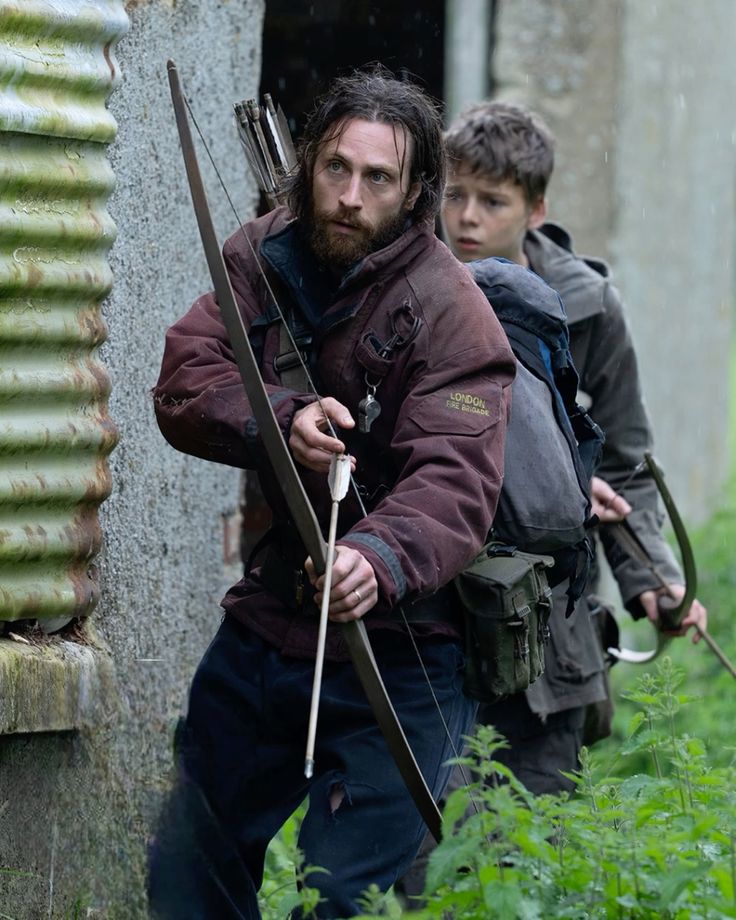Introduction
Danny Boyle returns to the post-apocalyptic horror genre with 28 Years Later, the highly anticipated third installment in the iconic “28 Days” franchise. Following the events of 28 Days Later (2002) and 28 Weeks Later (2007), this new chapter revisits a world plagued by the Rage virus, but with a distinct shift in tone and storytelling. In this 28 Years Later movie review, we’ll explore how the film balances its horror roots with an emotionally rich narrative—and whether that balance succeeds.
A Legacy Reawakened
Nearly three decades after the original outbreak devastated the UK, 28 Years Later opens with a haunting vision of a quarantined island society cut off from the rest of the world. This time, the story centers on Jamie (Alfie Williams), a young man whose search for his mother, Isla (Jodie Comer), drags him and his family back into the heart of an infected mainland. The film quickly reestablishes the eerie tone that made its predecessors so memorable—but it also ventures into new thematic territory.
Boyle, reuniting with screenwriter Alex Garland, infuses the film with a heavier emotional weight. Instead of focusing solely on survival horror, 28 Years Later dives into themes of generational trauma, identity, and the cyclical nature of violence. The result is a movie that feels less like a traditional horror film and more like a dystopian drama with occasional bursts of terror.
Visual Mastery Meets Emotional Complexity
One of the film’s greatest strengths lies in its visual storytelling. Boyle employs modern techniques, including sequences shot entirely on iPhones, to create a raw, immersive aesthetic. The cinematography blends stark, desaturated landscapes with moments of vibrant chaos, capturing both the bleakness and beauty of this devastated world.
The infected—now slightly evolved—remain terrifying, and Boyle doesn’t shy away from gore. But unlike its predecessors, 28 Years Later doesn’t rely solely on horror set-pieces. Instead, it takes time to build emotional arcs, especially between Jamie, Isla, and Jamie’s father (played by Ralph Fiennes). Their fractured family dynamic provides the film with a compelling emotional core.
From Horror to Melodrama: A Divisive Shift
While the movie excels in atmosphere and performances, it has drawn mixed reactions for its genre-bending narrative. Some critics argue that the film’s move from horror to melodrama undercuts the raw intensity that defined the first two installments.
Jodie Comer delivers a powerhouse performance as Isla, balancing ferocity and vulnerability. Alfie Williams impresses with his breakout role, portraying Jamie with a mix of naïveté and resilience. Ralph Fiennes adds gravitas as a man haunted by past decisions. However, their strong performances are sometimes overshadowed by a script that wavers between philosophical musings and pulpy action.
The controversial final act features an over-the-top cult sequence that feels jarringly out of place. Though it adds a layer of allegorical meaning—touching on themes of authoritarianism and fanaticism—the execution veers into camp, alienating some audiences.
A Franchise Evolves
For fans of the franchise, 28 Years Later offers both nostalgia and novelty. The film retains the DNA of the original with its bleak tone, kinetic action, and social commentary. Yet, it takes bold risks in evolving the narrative. The infected are more intelligent, the stakes are more psychological, and the horror is more existential.
The movie sets up the next installment, 28 Years Later: The Bone Temple, scheduled for release in 2026. This upcoming sequel, directed by Nia DaCosta, promises to continue exploring the philosophical and emotional underpinnings introduced in this film. Whether that direction will satisfy horror purists remains to be seen.
Critical Reception
Reactions from critics and fans have been polarizing. The Verge described it as a “bleak fever dream” with strong visuals but a lack of originality. Pitchfork criticized its tonal inconsistency, calling it a “zombie movie for the dumb smart guy.” However, outlets like TIME and the Washington Post praised its ambition, performances, and thematic depth.
Audience reviews are equally divided. Some applaud Boyle’s effort to redefine the franchise and explore deeper emotional territory. Others miss the adrenaline-fueled horror that made 28 Days Later a genre classic.
Conclusion?
In this 28 Years Later movie review, we’ve dissected a film that dares to be different. Danny Boyle’s return to the world of the infected is visually stunning, emotionally ambitious, and undeniably thought-provoking. However, its shift from horror to melodrama won’t appeal to everyone.
If you’re a fan of the original films and are open to a more introspective, genre-blending narrative, 28 Years Later is a worthy—if flawed—continuation. It’s not just a horror film; it’s a meditation on survival, memory, and what it means to be human in a world that’s lost its way.
Final Rating: 7.5/10
Whether you love it or loathe it, 28 Years Later proves that this franchise still has something to say—just not always in the way you might expect.

